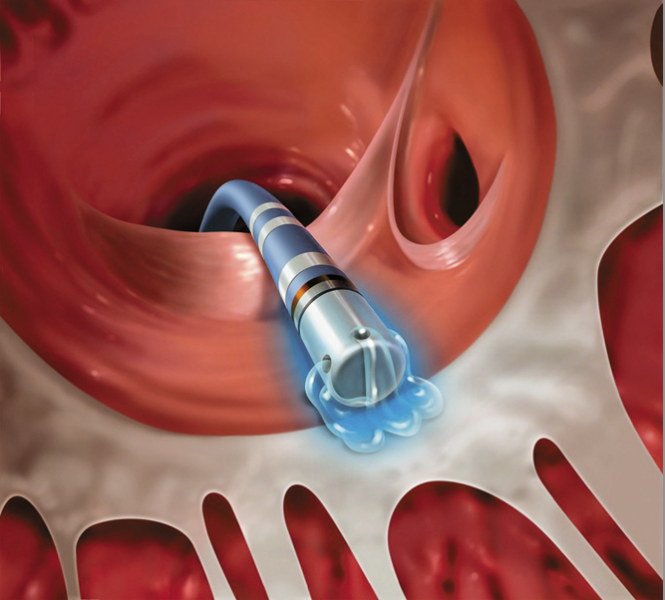
May 15, 2012 — Reaching out to patients with a few simple phone calls significantly improves the likelihood they’ll continue to take critically important medication that keeps blood clots from clogging a new stent, according to a study presented today at the SCAI 2012 Scientific Sessions.

As an editor for DAIC and Imaging Technology News, I am a third-party observer in the cardiac and radiology markets. I also am a patient who recently received medical imaging. With both these sets of experience, I am of the opinion that physicians often miss an opportunity to connect with their patients in a critical way, one which could increase patient involvement and compliance for treatments and follow-up exams.

Two next-generation automated contrast injector systems were recently introduced in the United States.
Providing exceptional cardiovascular care for patients to achieve the best possible outcomes is the number one goal for ...

Medical devices employed for injecting radio-opaque contrast media into the body to enhance the visibility of tissues for a medical imaging procedure are known as contrast injectors. Over the years, with ever-increasing technological sophistication, these contrast injectors have evolved from manual injectors having manifolds with stop-cocks to automated versions, providing added accuracy and advantages. These automated versions are known as autoinjectors. Autoinjectors are capable of controlling the amount of contrast media injected, utilization rate, and are also able to increase dosage to keep pace with fast medical imaging scanners as well as alert the physician of potential hazards, such as air embolisms or extravasations.

Contrast-induced nephropathy (CIN) is a significant problem resulting from the use of iodine contrast agents in computed tomography (CT) scans and cath lab angiography. It can have a negative impact on mortality. This article outlines some of the key information on the agents themselves, possible methods of action and how to prevent and treat CIN.

The radial artery approach is exceptionally well-suited for diagnostic angiography and, with a lower incidence of bleeding complications, is a favorable alternative for femoral percutaneous coronary intervention (PCI). The most common complications with the transradial approach are asymptomatic radial artery occlusion (3-5 percent) and radial artery perforation (less than 1 percent).
Cardiac positron emission tomography (PET) is growing in popularity among cardiologists because it provides the ability ...
May 15, 2012 — Boston Scientific Corp. and Philips Healthcare announced a collaboration enabling Philips to sell Boston Scientific Imaging equipment in connection with its Allura Xper catheterization lab systems in territories worldwide.

Methodist DeBakey Heart and Vascular Center in Houston, Tex., has leveraged new imaging and interventional technologies to help contain and reduce costs, increase patient volume and revenues and build a reputation as a state-of-the-art heart center.

The American College of Cardiology (ACC) 2012 Scientific Session, held March 24-27 in Chicago, was the first major cardiology show this year for vendors to display their latest innovations. A couple of key trends were evident on the show floor – new technology to support trans-aortic valve replacement (TAVR) and the launch of new cardiovascular image and information systems (CVIS) to support healthcare’s adoption of proposed Stage 2 meaningful use requirements.
When performing radiofrequency (RF) ablation to treat cardiac arrhythmia, medical professionals must balance the safety ...
May 15, 2012 — Biotronik Inc., began its U.S. launch of its new Reocor external pacemaker. The device is available in two models, for dual- and single-chamber pacing therapy, and offers individualized patient therapy, easy handling and flexibility in every detail.
Sorin Group at the Heart Rhythm Society (HRS) scientific sessions announced U.S. Food and Drug Administration (FDA) approval and commercial launch for a full portfolio of pacing, defibrillation and left ventricular leads. Designed for effective electrical performance and durability, each of the three lead series – Tilda pacing leads, Vigila defibrillation leads and Celerity left ventricular leads – include multiple sizes and features to enable physicians to match their implant preferences with individual patient needs.

Patients with the heart rhythm disorder atrial fibrillation (AFib) who received first-line catheter ablation treatment had a longer arrhythmia-free interval than patients receiving anti-arrhythmic drugs, the standard first-line treatment. The preliminary findings were presented during a late-breaking session at the Heart Rhythm Society (HRS) 2012 scientific sessions last week in Boston.
Change Healthcare Cardiology Hemodynamics is an integrated hemodynamic monitoring system for monitoring vital signs and ...
May 14, 2012 — Lantheus Medical Imaging Inc. announced new manufacturing and supply agreements with Jubilant HollisterStier LLC (JHS). Under separate agreements, JHS will manufacture Cardiolite (kit for the preparation of technetium Tc99m sestamibi for injection) products and Neurolite (kit for the preparation of technetium Tc99m bicisate for injection), each for an initial term of five years and each with an option to renew for an additional five years thereafter.
May 14, 2012 — GE Healthcare introduced a new version of its Vscan pocket-sized visualization tool, developed to deliver imaging capabilities at the point of care. Based on feedback from current Vscan users, the new version features extended battery life, a more intuitive user interface and enhanced reporting capabilities.
May 14, 2012 — During the Heart Rhythm Society (HRS) 2012 scientific sessions last week, Biosense Webster Inc. announced it created strategic collaboration agreements with GE Healthcare and Siemens Healthcare. The agreements will make it easier for the vendors to work jointly to create advanced electrophysiology (EP) labs

 May 15, 2012
May 15, 2012









